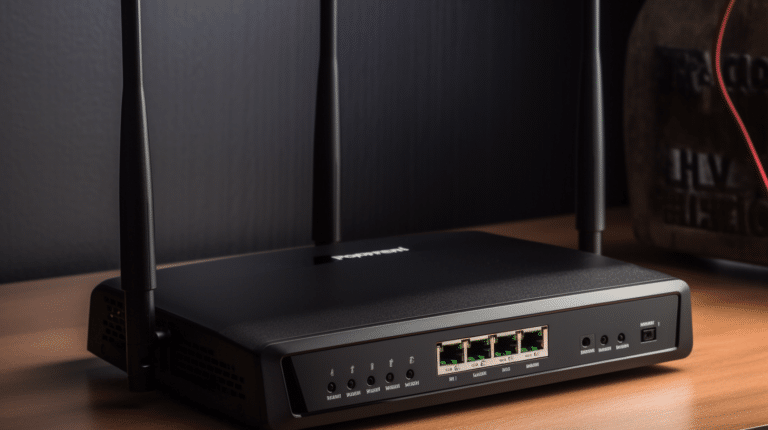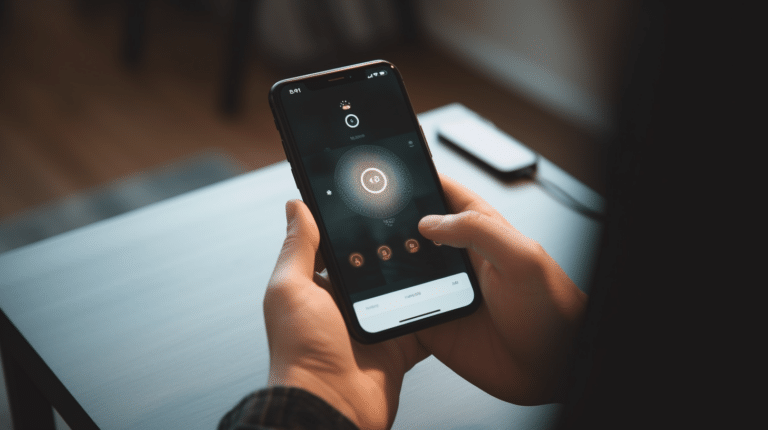Twitter is one of the most popular social media platforms in the world, with millions of users sharing their thoughts and engaging with others daily. However, there are instances when one might want to step back from the platform, either temporarily or permanently, resulting in the need to delete their Twitter account. Knowing how to permanently delete your Twitter account is essential if you decide it is time to say goodbye to this social media platform once and for all.
Before you consider permanently deleting your Twitter account, it is important to understand the process and the potential consequences of doing so. Deactivating your account is a temporary measure, and if you do not follow up with the steps necessary to permanently delete the account, it can be reactivated later on. To avoid any doubt and ensure that your account is indeed permanently deleted, it is crucial to follow the right steps in order.
Key Takeaways
- Understand the process and consequences of permanently deleting a Twitter account
- Know the difference between deactivating and permanently deleting an account
- Be aware of the steps necessary to remove Twitter data from third-party platforms and search engines
Why Deactivate and Permanently Delete a Twitter Account
Deactivating and permanently deleting a Twitter account can be a crucial step for users who are concerned about their privacy and safety on social media platforms. As Twitter is a fast-paced, information-driven platform, users often share personal thoughts, opinions, and experiences through tweets and direct messages. However, these interactions can sometimes lead to potential problems, such as targeted harassment, data misuse, or misinterpretation of content.
One primary reason for deleting a Twitter account is to protect personal privacy. Twitter’s public nature means that anyone can access and view a user’s tweets, leading to the possibility of personal information being leaked or inadvertently shared. By permanently deleting the account, users can ensure that their tweets and direct messages are no longer available, not just to the public, but also to data mining tools and services that try to exploit this information.
Another motive for deactivating and permanently deleting a Twitter account is to prioritize online safety. Anyone on Twitter can become a target of online harassment, trolling, or doxxing, especially when expressing strong opinions or engaging in controversial discussions. Removing the account can help individuals protect themselves from these negative experiences and underlines the importance of maintaining a secure online presence.
Besides privacy and safety concerns, users may also choose to deactivate their account to prevent future misunderstandings. Over time, people’s values and opinions can evolve, leading to a discrepancy between their past tweets and current beliefs. Deactivating the account can symbolize a fresh start and prevent past tweets from resurfacing, which could otherwise potentially harm the individual’s personal or professional reputation.
In summary, permanently deleting a Twitter account can provide users with increased privacy, safety, and control over their online presence. By removing tweets and direct messages from the platform, individuals can ensure that their personal information is protected and avoid any potential negative consequences.
Preparing for Deactivation and Deletion
Before you proceed with permanently deleting your Twitter account, it’s essential to take a few preparatory steps to ensure a smooth process. These steps will help you manage your account information, security, and old tweets effectively.
First, log in to your Twitter account and navigate to the Settings and Privacy section. Here, make sure your email address and username are accurate, as you might need them to verify your identity during the deactivation process. If necessary, update your account information to avoid any inconveniences later on.
Next, review your password for security purposes. Consider changing your password if it’s not strong enough or if it has been a while since you last updated it. A strong password should include a combination of uppercase and lowercase letters, numbers, and special characters.
Once you have ensured the security of your account, you may want to download a copy of your Twitter data for personal reference or archival purposes. This data includes your account details, Tweets, media, and other information. To download your data, go to the Account tab in the Settings and Privacy section and click on the “Request your archive” button. Twitter will generate a file containing your data and email it to your registered email address.
With your account information and security sorted out, take a moment to review and remove any sensitive or unwanted old tweets. Deleting old tweets might help protect your privacy and prevent any unwanted associations with your past online activity. There are several third-party tools available to help you mass delete tweets if required.
After completing these steps, you will be better prepared to deactivate and permanently delete your Twitter account. Remember, once you delete your account, it cannot be recovered, so make sure you’ve taken the necessary precautions before proceeding.
How to Deactivate Your Account
Deactivating your Twitter account is a straightforward process that can be done from both a web browser and a mobile app. In this section, we will walk you through the steps to permanently delete your account using these two methods.
From Web Browser
- Log in to your Twitter account on your preferred web browser.
- Click on the More icon (three horizontal dots) on the left-hand side of the screen.
- A drop-down menu will appear; select Settings and privacy.
- Under the Your account section, click on Deactivate your account.
- Read the information about deactivating your account and then click on the Deactivate button.
- You will be prompted to enter your account password; provide it and click Deactivate again to confirm your decision.
From Mobile App (Android and iOS)
- Open the Twitter app on your Android or iOS device.
- On the top-left corner, tap on your profile picture or the three horizontal lines (hamburger icon) to access the main menu.
- Choose Settings and privacy from the menu.
- Tap on Account found within the settings.
- Scroll down and select Deactivate your account.
- Read the information about deactivating your account and then tap on the Deactivate button.
- Enter your account password when prompted and tap Deactivate again to confirm your decision.
Please note that deactivating your account will remove your data from Twitter, but some content may still be visible in search engines for a short period. It is also important to remember that you have a 30-day grace period to reactivate your account if you change your mind. After that period, your account will be permanently deleted.
What Happens After Deactivation
When you decide to deactivate your Twitter account, several things occur. First and foremost, your account is temporarily removed from the platform. After you initiate deactivation, a 30-day period called the deactivation period goes into effect. During this time, your account is taken off the site and your tweets, followers, and direct messages will no longer be accessible or visible.
However, this deactivation does not meant your account is permanently deleted. If you change your mind within the 30-day deactivation period, you can easily reactivate your account by simply logging back in. Keep in mind that it may take a few hours or even days for your account to be fully restored, including your tweets, followers, and direct messages.
Once the 30-day deactivation period ends and you have not reactivated your account, it will be permanently deleted from Twitter’s system. This means your tweets, followers, and direct messages will be gone forever, and you cannot retrieve or reactivate your account.
In summary, after deactivation, your Twitter account enters a 30-day deactivation period, during which you can still reactivate your account and restore its content. However, if you let the deactivation period pass without reactivating, your account will be permanently deleted, and all associated data will be lost. It’s essential to weigh your options carefully and be sure of your decision before proceeding with deactivation.
How to Permanently Delete Your Account
To permanently delete your Twitter account, you will first need to go through the deactivation process. Deactivating your account temporarily disables it, but after a 30-day grace period, Twitter will permanently delete your account and all associated data. Please follow these steps to permanently delete your account:
- Log in: Make sure you are logged in to your Twitter account on either the web or mobile app.
- Navigate to Settings: In the web version of Twitter, click on the ‘More’ menu (…) in the left-hand column, then select ‘Settings and Privacy.’ On the mobile app, tap your profile icon in the top left, then select ‘Settings and privacy’.
- Select ‘Deactivate your account‘: In the ‘Account’ section, locate the option to ‘Deactivate your account,’ usually towards the bottom. Click on it to begin the deactivation process.
- Review the information provided: Twitter will provide information on the consequences of deactivating your account. Read this information carefully, so you understand that deactivation eventually leads to permanent deletion after 30 days.
- Click ‘Deactivate’: To confirm your decision, click the ‘Deactivate’ button. You may be asked to enter your password to verify your identity.
- Confirm the deactivation: Double-check that you want to permanently delete your account before clicking ‘Yes, deactivate’ to finalize the process.
It’s essential to remember that during the 30-day grace period, you can reactivate your account by simply logging in. Your data and tweets will still be available during this time. However, after 30 days, Twitter will initiate the process to delete your account permanently, and your data will no longer be recoverable.
Remember that permanently deleting your account means losing all your tweets, followers, and the username associated with the account, so take time to ensure this is the right decision for you.
Removing Twitter Data from Third-Party Platforms and Search Engines
When you deactivate or permanently delete your Twitter account, your tweets and other account information may still appear on third-party platforms and in search engine results. Here’s how you can request the removal of your data from these sources.
First, it’s important to understand that search engines like Google and Bing index public tweets and make them searchable. If you want your Twitter data removed from these search results, you can submit removal requests. Keep in mind that removing search results does not delete the actual content from the internet, so other users may still be able to access and share your tweets.
For Google, you can use their Remove Outdated Content tool to request the removal of specific search results or cached content. You’ll need the URL of the page containing the outdated content. If Google approves your request, it will take about a day for the changes to take effect.
Bing also offers the ability to request content removal. Visit their Content Removal Request page, sign in with your Microsoft account, and follow the instructions to request the removal of your Twitter content. Like Google, Bing will review your request and act on it if it’s approved.
In the case of third-party apps, you might have granted access to your Twitter account’s data in the past. To revoke permissions for these apps:
- Log in to your Twitter account and click on “Settings and privacy.”
- Select “Apps and sessions” on the left-hand menu.
- Review the list of connected apps and click “Revoke access” next to any app you’d like to remove.
Once you’ve revoked access for these apps, they will no longer have access to your Twitter data. However, if they have already saved any of your information, you may need to contact the app developer directly to request its removal.
By following these steps, you can further ensure the privacy of your deleted Twitter account and minimize the appearance of your data on third-party platforms and search engines.
Archiving Tweets and Account Information
Before you proceed with permanently deleting your Twitter account, it’s essential to archive and save your tweets and account information. Twitter provides the option to download an archive of your data, which includes your tweets, media, profile information, and more.
To request your archive, follow these steps:
- Log in to your Twitter account.
- Click on the “More” option in the left-hand menu.
- Select “Settings and privacy.”
- Under the “Data and permissions” section, click “Your Twitter data.”
- Enter your password to confirm your identity.
- Click on the “Request archive” button.
Twitter will generate your archive, which may take some time depending on the size of your account. Once ready, you will receive a download link via email.
The downloaded zip file will contain a variety of files in JSON and CSV formats, including your tweet history, lists you’ve created or followed, and other account information. Your tweet history, in particular, will be available as an easy-to-navigate HTML file, making your archived tweets viewable in a web browser.
Keep in mind, once your Twitter account is permanently deleted, you will no longer have access to your tweets or account information, so it’s important to store this archive in a secure location.
When moving forward with permanently deleting your Twitter account, it’s important to remember that there is a 30-day grace period. During this time, your account will be deactivated, but you may still reactivate it by logging in. After the 30-day period, your account and data will be permanently deleted and cannot be restored.
Alternatives to Deletion
If you don’t want to permanently delete your Twitter account, you have several alternatives that can help you manage your digital presence more effectively. These alternatives can offer similar benefits, such as privacy or reducing your online footprint, without doing away with your entire Twitter history and account.
One alternative is to block problematic users or users you do not want to interact with. When you block someone, they cannot view your tweets or follow you on Twitter. This can help you protect yourself from unwanted interactions and harassment. To block a user, visit their profile, click on the three vertical dots icon, and select “Block.”
Another approach is to suspend your account temporarily. Suspending your account allows you to take a break from the platform without losing any of your content, followers, or settings. You can reactivate your account at any time by logging back in. To suspend your account, visit your Twitter settings, click on “Deactivate your account,” and follow the instructions provided.
There are also third-party tools, such as TweetDelete, that can help you manage your Twitter presence. TweetDelete automatically deletes old tweets, retweets, and favorites based on your chosen criteria. This service can be useful in keeping your timeline fresh and focused on your current interests, making it a valuable alternative to complete account deletion.
Lastly, if you want to change your Twitter handle, you can do so by updating your username in the account settings, rather than deleting your entire account. Updating your handle allows you to keep your existing account and data while adopting a new identity on the platform. To change your handle, go to your Twitter settings, click on “Account,” update the “Username” field, and save your changes.
By considering these alternatives to account deletion, you can manage your Twitter presence in a more tailored and flexible way while retaining the value of your content and connections.
Notable Accounts That Have Been Deleted
Twitter is a platform where people from all walks of life share their thoughts, ideas, and opinions. Over the years, there have been instances where prominent figures, such as Elon Musk and various politicians, have either deleted their accounts or had them removed by Twitter.
Elon Musk, the CEO of Tesla and SpaceX, has a significant presence on Twitter, known for his wit and sometimes-controversial tweets. In October 2018, he made headlines when he deleted his account for a brief period following controversies surrounding his tweets. During this time, Musk’s Twitter account displayed the message “This account doesn’t exist.” However, his account was later restored, much to the relief of his millions of followers.
The political sphere has also seen its fair share of account deletions. Some politicians have deleted their accounts voluntarily, while others have faced actions from Twitter for violating the platform’s guidelines. In January 2021, the then-US President Donald Trump’s account was permanently suspended from Twitter due to “the risk of further incitement of violence.” This move sparked a debate on free speech and the role of social media platforms in regulating content.
Here are some additional examples of notable account deletions:
- Rose McGowan: The actress and activist temporarily deactivated her account during the MeToo movement in 2017 after it was locked by Twitter for violating copyright rules on a personal phone number.
- Chrissy Teigen: The model and social media influencer deleted her account in March 2021, citing the negative impact it had on her mental health.
- Milo Yiannopoulos: The right-wing provocateur’s account was permanently banned in 2016 for instigating targeted harassment campaigns.
Although these account deletions have various reasons behind them, they demonstrate the impermanence of digital communication on platforms like Twitter. Users should be mindful of the content they share, as well as the potential consequences of their online interactions.
Tips for Maintaining a Secure and Private Account
Maintaining a secure and private Twitter account is essential for protecting your personal information and ensuring a safe experience on the platform. By following a few simple steps, you can ensure that your account remains secure and private.
Firstly, visit the Settings and Privacy section of your Twitter account. This can be accessed from both the Twitter application and the web version. Here, you can customize your account settings to maximize privacy and security.
To prevent unauthorized access, it is crucial to use a strong, unique password for your account. Combine upper and lower case letters, numbers, and special characters to create a robust password. Additionally, consider using a password manager to securely store your information and make it easier to manage multiple passwords across different accounts.
The email address associated with your account should also be kept secure. Make sure to use a dedicated email address for your social media accounts, separate from your primary email. This helps to limit any potential risks in case your email is compromised. Additionally, enable two-factor authentication (2FA) to add an extra layer of security when signing in.
Configuring your Twitter account’s privacy settings is crucial for maintaining a safe online presence. You can choose to protect your tweets, which will require your approval for new followers and keep your tweets private. Also, adjust other settings such as disabling photo tagging or location sharing to increase your privacy.
Security features on Twitter, such as login verification, can help protect your account from unauthorized access. Make sure to enable this feature and customize other security options, such as resetting your password via email or SMS, to safeguard your account.
If you decide to subscribe to Twitter Blue, the platform’s subscription service, be aware of the additional privacy and security settings available to you. Make use of these options to further strengthen your account’s safety.
Staying vigilant about the services and applications that have access to your Twitter account is essential. Regularly review and revoke access for any unnecessary or suspicious apps in the “Connected Apps” section of your settings.
Finally, always be mindful of your online activity. Limit sharing personal information on your social media account and be cautious about the links you click. Being proactive and security-conscious will help ensure a secure and private experience on Twitter and the wider internet.
Frequently Asked Questions
What are the steps to delete a Twitter account permanently?
To delete a Twitter account permanently, follow these steps:
- Log in to your account on the Twitter website.
- Click on your profile icon and select “Settings and privacy.”
- Scroll down and click on “Deactivate your account.”
- Read the information provided and click on “Deactivate.”
- Enter your password to confirm the action.
Remember, your account will be deactivated for 30 days before it is permanently deleted.
Can I remove my Twitter account without a 30-day wait?
No, you cannot remove your Twitter account without a 30-day wait. After deactivating your account, there is a 30-day grace period during which you can reactivate it by logging in. After this period, your account will be permanently deleted.
Is there a way to delete a Twitter account without logging in?
Unfortunately, there is no way to delete a Twitter account without logging in. You must log in to your account to access the “Settings and privacy” menu where the deactivation option is located.
What occurs when deactivating a Twitter account?
When you deactivate a Twitter account, your profile, tweets, and media will be hidden from other users for 30 days. If you do not reactivate your account within this grace period, it will be permanently deleted, and the data will no longer be recoverable.
How can I delete a suspended Twitter account?
To delete a suspended Twitter account, you must first appeal the suspension by submitting a request to Twitter Support. If the suspension is lifted, you can then follow the steps mentioned above to delete your account.
Can I create a new Twitter account with the same email after deletion?
Yes, you can create a new Twitter account with the same email after your previous account has been permanently deleted. Just make sure your original account is past the 30-day grace period and has been fully deleted before attempting to create a new account with the same email.






